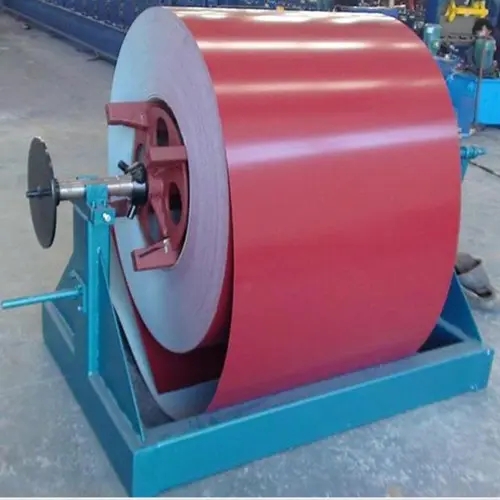
The Purlin Rolling Machine An Essential Tool for Modern Construction
In the realm of modern construction and metal fabrication, the purlin rolling machine has emerged as a vital tool. This machine specializes in the production of C and Z sections, commonly known as purlins, which are critical components in the construction of steel buildings, warehouses, and agricultural structures. Purlins serve multiple purposes, including providing support for roofing and siding materials, and ensuring structural integrity. This article will examine the significance of purlin rolling machines, their working principles, advantages, and applications.
Understanding Purlins
Purlins are horizontal members that are used to support roofing and wall cladding in a building's framework. The two most common types of purlins are the C and Z profiles. The C-section purlins are generally installed on their sides, providing a stable platform for roofing materials, while Z-section purlins can interlock, allowing for greater strength and load-bearing capacity. Given their importance, the need for high-precision and durable purlins led to the development of specialized rolling machines.
The Working Principle of Purlin Rolling Machines
Purlin rolling machines, often known as purlin mills, utilize a series of rollers to transform flat steel sheets into desired purlin shapes. The process starts with feeding flat steel into the machine, where it passes through a set of rollers designed to bend and shape the metal progressively. As the flat steel moves along the machine, it goes through numerous stations, each modifying its profile until the final desired shape is achieved.
The precision of these machines is vital. Modern purlin rolling machines are equipped with digital controls and advanced automation technologies, ensuring consistent quality and dimensions throughout the production process. Some machines incorporate a quick-change feature that allows operators to switch between different purlin sizes and shapes with minimal downtime, increasing efficiency in the manufacturing process.
Advantages of Purlin Rolling Machines
1. Efficiency and Speed One of the most significant advantages of using a purlin rolling machine is the speed at which purlins can be produced. Automated processes reduce manual labor, allowing for faster production times.

2. Cost-Effectiveness By streamlining the manufacturing process of purlins, these machines help reduce production costs. The ability to produce high volumes of purlins quickly translates to lower overall expenses, making projects more profitable.
3. Customizability Purlin rolling machines can be easily adjusted to produce various purlin sizes, shapes, and thicknesses. This flexibility allows manufacturers to meet specific client requirements while reducing inventory costs.
4. Quality and Precision Advanced purlin rolling machines ensure uniformity in production, resulting in high-quality purlins with consistent dimensions. This precision is essential for maintaining structural integrity in building projects.
5. Material Utilization These machines are designed to minimize material wastage, as they can accurately size purlins without excess scrap, thus promoting a more sustainable manufacturing process.
Applications of Purlins
Purlin rolling machines have extensive applications in various industries. They are predominantly utilized in the construction of industrial buildings, warehouses, and agricultural structures. The ability to provide lightweight yet strong support makes purlins ideal for use in roofing systems, where they can effectively bear heavy loads while optimizing space.
Additionally, with the rise of prefabricated construction methods, the demand for factory-produced components like purlins is increasing. This trend has led to innovations in purlin rolling machines, making them indispensable in modern construction practices.
Conclusion
The purlin rolling machine is an essential tool in contemporary metal fabrication and construction. Its efficiency, cost-effectiveness, and precision play crucial roles in meeting the increasing demand for high-quality building materials. As technology advances, these machines are likely to become even more sophisticated, further enhancing their impact on the construction industry. For builders and manufacturers alike, investing in a purlin rolling machine represents not just a step towards modernization, but also a commitment to delivering quality and reliability in every project.